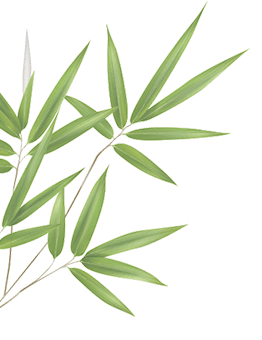







Bambusa bambos is the world's highest density bamboo. It is the ideal raw material for replacing timber usage across the board. It is the native species of our region and successfully grows in natural climatic conditions with minimum maintenance.
The contract is for 40 years. It includes a 3% increment in price every 4 years.
Artison expects the terms of the contract to be followed. Thus, if an individual or entity chooses to sell Bambusa bambos to a third party, then the contract with Artison is deemed null and void. We will stop procuring from the individual.
Artison honours its commitment to buy at the rate listed in the contract, even during economic downturns. For example, during COVID years (2020 and 2021), we continued to honour the contract and buy from farmers at the contract rates despite our factory not being operational. This shows our commitment towards our farmers and the contract terms. We expect reciprocal commitment towards Artison.
Artison will provide 1.5-2.0 years old bamboo seedlings to the farmers at nominal fee , once the contract has been signed.
No, seedlings procured from Artison cannot be resold. Doing so would lead to the termination of our contract. Artison will not work with or procure bamboo from individuals or entities involved in such activity.
With the distance of 15*15 feet 145 plants per acre can be planted. With the distance of 20*20 feet 108 plants per acre can be planted.
See Table 1
Every year new shoots will come up from the plant and clums become larger. For the smooth harvesting operation, we need space and also it will aid the bamboo plant in developing properly.
Once a pole is cut, a new pole grows in the adjacent area. Thus, adequate space is needed for the plant to grow for several years.
In one acre of land, with mature and fully grown Bambusa bambos plants, one can earn 1-1.2 lakh per acre.
Table 1:
| YEAR | NO. OF POLE | HARVESTING YEAR | EXPECTED WEIGHT PER POLE | E = Return(in Rs) |
|---|---|---|---|---|
| A | B | C | D | (108*B*D*2)= E |
| 1st | Plant | NIL | ||
| 2nd | Plant | NIL | ||
| 3rd | 6-7pole | 6th year | 30 kg | 38,880.00 |
| 4th | 7-8 pole | 7th year | 40kg | 60,480.00 |
| 5th | 8-9 pole | 8th year | 50kg | 86,400.00 |
| 6th | 9-10 pole | 9th year | 60kg | 1,16,640.00 |
| 7th | 10-11 pole | 10th year | 65kg | 1,40,400.00 |
| 8th | 10-12 pole | 11th year | 70kg | 1,51,200.00 |
| 9th | 10-12 pole | 12th year | 70kg | 1,51,200.00 |
| 10th | 10-12 pole | 13th year | 70kg | 1,51,200.00 |
| - | - | - | - | |
| - | - | - | - | |
| - | - | - | - | |
| 40th | 10-12 pole | 45th year | 80kg | 1,72,800.00 |
A Bambusa bambos plant’s life is 70-80 years.
Shall be paid as per the contract terms, directly into the related bank account.
As the bamboo plant continues to grow, the space for planting herbal crops will reduce. However, creeper plants such as blackpepper can be grown, further boosting income.
An acre's plantation of Bambusa bambos will have just 1/4th of the water requirement of an acre of sugarcane plantation.
We recommend and encourage drip irrigation to be used for the plantation of Bambusa bambos.
5-6 liters of water will be needed weekly during Summer.
We don't recommend fertilizer usage as we wish to prevent the use of chemicals. But if necessary, we recommend only organic fertilizers.
Yes, water soluble fertilizers can be used. However, fertilizer costs are borne by the farmers.